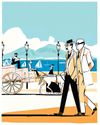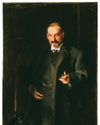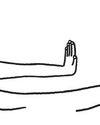
New York, 1969. Asleep in a chair, Indiana Jones (Harrison Ford) is awoken not by an explosion, or by gunfire, but by a blast of "Magical Mystery Tour" from a nearby apartment. As he rises to remonstrate, he is shown naked to the waist, visibly worn, and stripped of both mystery and magic. The years have taken their usual withering revenge. Having spent his life hunting antiquities, Jones is at risk of becoming one himself. He pours a slug of booze into his coffee, and a document, glimpsed in passing, reveals that he is divorced from his wife, Marion (Karen Allen). Soon afterward, we see him teaching at Hunter College, where the students doze through his lecture. In honor of his years of service, he receives a clock, which he gives to a homeless man in the street. Time be damned.
These sorry scenes come from the fifth and almost certainly final chapter of a franchise that began in 1981. The new film is directed by James Mangold rather than by Steven Spielberg, and the title is not, as you might expect, "Indiana Jones and the Bathroom Break of Doom" or "Raiders of the Lost Slipper" but "Indiana Jones and the Dial of Destiny." It's a movie of two minds, marked with hints of the hero's mortality-"Everything hurts," he says near the end and yet determined to convince itself, and us, that he is the exception to the rule of universal entropy. Once Jones gets going, his exploits acquire a desperate edge that wasn't there in the earlier movies. Maybe he fears that, were he to pause for breath, he might expire.
This story is from the July 10 - 17, 2023 (Double Issue) edition of The New Yorker.
Start your 7-day Magzter GOLD free trial to access thousands of curated premium stories, and 9,000+ magazines and newspapers.
Already a subscriber ? Sign In
This story is from the July 10 - 17, 2023 (Double Issue) edition of The New Yorker.
Start your 7-day Magzter GOLD free trial to access thousands of curated premium stories, and 9,000+ magazines and newspapers.
Already a subscriber? Sign In

BADDIE ISSUES
\"Wicked\" and \"Gladiator II.\"

LET'S MAKE A DEAL
\"Death Becomes Her\" and \"Burnout Paradise.\"

ANTI HEROES
\"The Franchise,\" on HBO.

FELLOW-TRAVELLERS
The surprisingly sunny origins of the Frankfurt School.

NOW YOU SEE ME
John Singer Sargent's strange, slippery portraits of an art dealer's family.

PARIS FRIEND - SHUANG XUETAO
Xiaoguo had a terror of thirst, so he kept a glass of water on the table beside his hospital bed. As soon as it was empty, he asked me to refill it. I wanted to warn him that this was unhealthy - guzzling water all night long puts pressure on the kidneys, and pissing that much couldn't be good for his injury. He was tall, though, so I decided his insides could probably cope.

WILD SIDE
Is Lake Tahoe's bear boom getting out of hand?

GETTING A GRIP
Robots learn to use their hands.

WITHHOLDING SEX FROM MY WIFE
In the wake of [the] election, progressive women, who are outraged over Donald Trump's victory at the ballot box, have taken to social media with public, vengeful vows of chastity. - The Free Press.

DEADLINE EXTENSION
Old age, reborn.